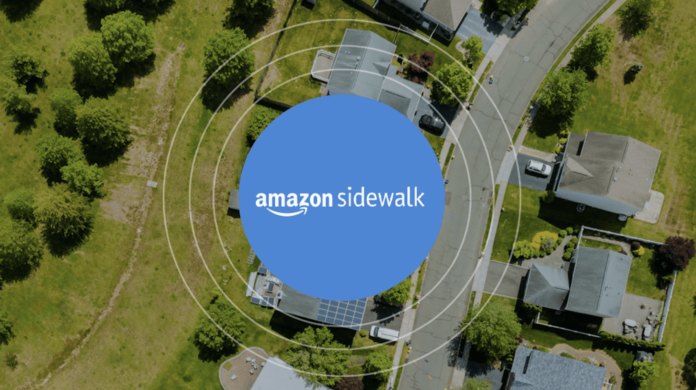The LoRa Alliance, the technical and marketing group promoting the LoRaWAN protocol for wide-area network (WAN) communications, is looking at ways to tweak the LoRaWAN specification for Amazon, so the retail and cloud giant switches its Sidewalk wireless networking platform from a proprietary version of LoRa to LoRaWAN.
A new working group, called LoRaWAN-Versus-Proprietary, has been established inside the LoRa Alliance to address certain shortcomings in the LoRaWAN specification to make it workable for Amazon, which selected a proprietary version of LoRa over LoRaWAN for Sidewalk in September.
At the time, Camarillo-based Semtech, which owns the non-cellular LoRa technology, hailed LoRa’s move into the consumer space, having established itself in proprietary setups and as the root technology in LoRaWAN for low-power industrial IoT connectivity.
The deal with Amazon, to underpin its new Sidewalk platform, running in 900 MHz spectrum, is a feather in the cap for the firm, and a driver potentially for considerable volumes in the smart-home market. At the same time, the announcement has shaken the LoRaWAN community, which has established a vibrant ecosystem.
The fear is its noisy stable of software developers, module makers, and solution providers will be pulled two ways – and likely away from its core engine room in the industrial IoT space, leaving a way open for rival non-cellular and cellular low-power wide-area (LPWA) IoT technologies, including Sigfox and MIOTY, and NB-IoT and LTE-M, respectively.
But the LoRa Alliance and Semtech told Enterprise IoT Insights work is under way to right the situation with Amazon, and address technical issues in the LoRaWAN specification, around smart-home security, latency, and provisioning. Both parties expect the decision to be reversed, it appears, and for LoRaWAN to take over in Sidewalk networks and devices.
Remi Lorrain, vice chair of the network operator forum and EMEA at the LoRa Alliance, and global LoRaWAN networks director at Semtech, commented: “There are certain specific requirements in the smart home, around security and latency, and device provisioning, and things like that. The smart home is an emerging market for LoRaWAN still, and the LoRaWAN specification has not yet met all of those requirements. That is why Amazon went with LoRa over LoRaWAN.”
He continued: “But the goal, which has already started, is to have that discussion with the LoRa Alliance – to explain why Amazon did not choose LoRaWAN, and the features it needs to extend LoRaWAN specification. That discussion is ongoing, today, to set up a working group to look at that, and to analyse carefully why a player like Amazon did not choose LoRaWAN.”
Lorrain added: “And will propose to the technical committee and the marketing committee at the LoRa Alliance the gap we have to work on. But it is just a question of time.”
Enterprise IoT Insights pressed him. So what you are saying is whatever the reasons Amazon went with LoRa over LoRaWAN will be addressed? “Yes,” responded Lorrain. And, to be clear; is the expectation that Amazon will reverse its decision? Because it looks like the decision has already been made. Is it not too late?
Lorrain said: “So, yes, the decision to put the solution into the market is already done. [But] Semtech supports the LoRa Alliance 100-percent, and the goal is to help the LoRa Alliance understand these gaps. Because these are gaps that the LoRaWAN specification has not yet addressed. We will both work together, with Amazon, to fill these gaps. And Amazon has absolutely no issue with that.”
So, to repeat: does Semtech and the LoRa Alliance expect Amazon to migrate to LoRaWAN in the future? “Yes. That is the clear goal. Why? In order to achieve one ecosystem. Because Amazon will bring, let’s say, hundreds of millions of LoRaWAN devices to the market, we hope. And the scaling-effect will benefit the whole ecosystem, impacting cost, as well as innovation. So we all have a strong interest to get Sidewalk into LoRaWAN.
Lorrain, speaking for both Semtech and the LoRa Alliance, noted, as well, Amazon’s membership of the alliance, via its AWS cloud venture, makes for a constructive approach on the LoRa/LoRaWAN issue. AWS is on the board LoRa Alliance, and an active member of the LoRaWAN community, he said.
He commented: “AWS is working on LoRaWAN products in certain parts of the value chain today. Part of its product portfolio is already based on LoRaWAN. Sidewalk part is only one of its projects – and we can say of Sidewalk that it is not LoRaWAN yet.”
A spokesperson added: “AWS is currently enabling logistics companies to use LoRaWAN to monitor their fleets and inventories. Additionally, AWS is supporting LoRaWAN for smart building solutions.” AWS is scheduled to present at the alliance’s Destination LoRaWAN webinar series, which kicks off next week (on December 16).
This week, the LoRa Alliance introduced device QR codes for automated ‘zero-touch’ onboarding to “simplify and accelerate” LoRaWAN network management. The QR codes can be printed on devices, and contain relevant preformatted device and vendor information. Alliance members are each assigned a dedicated vendor ID.
The alliance said: “They use industry-accepted norms for information processing, allowing members to implement a quick, easy, secure and interoperable method for onboarding a device through optical reading. This greatly improves the deployment experience while significantly accelerating the onboarding process.”
Donna Moore, chief executive and chair of the LoRa Alliance, commented: “QR code-based network management offers tremendous advantages by automating a previously manual process. These benefits build on our recent enhancements of the LoRaWAN 1.0.4 specification, which now provides every element needed for easy development, certification testing and deployment of LoRaWAN.”

